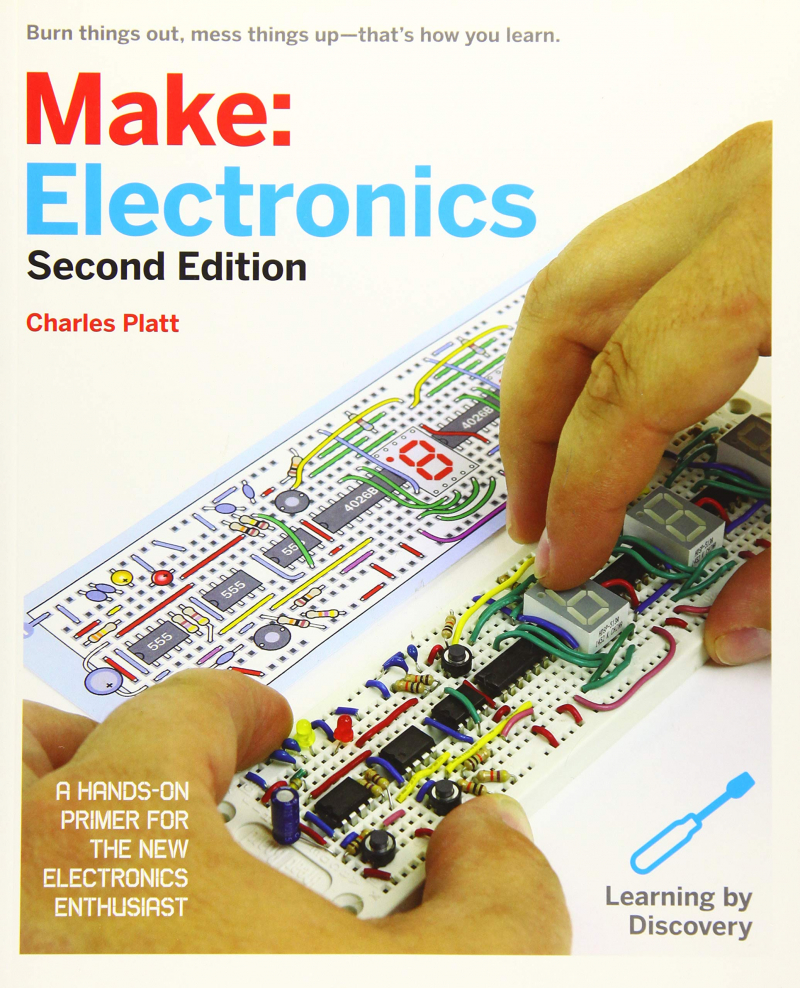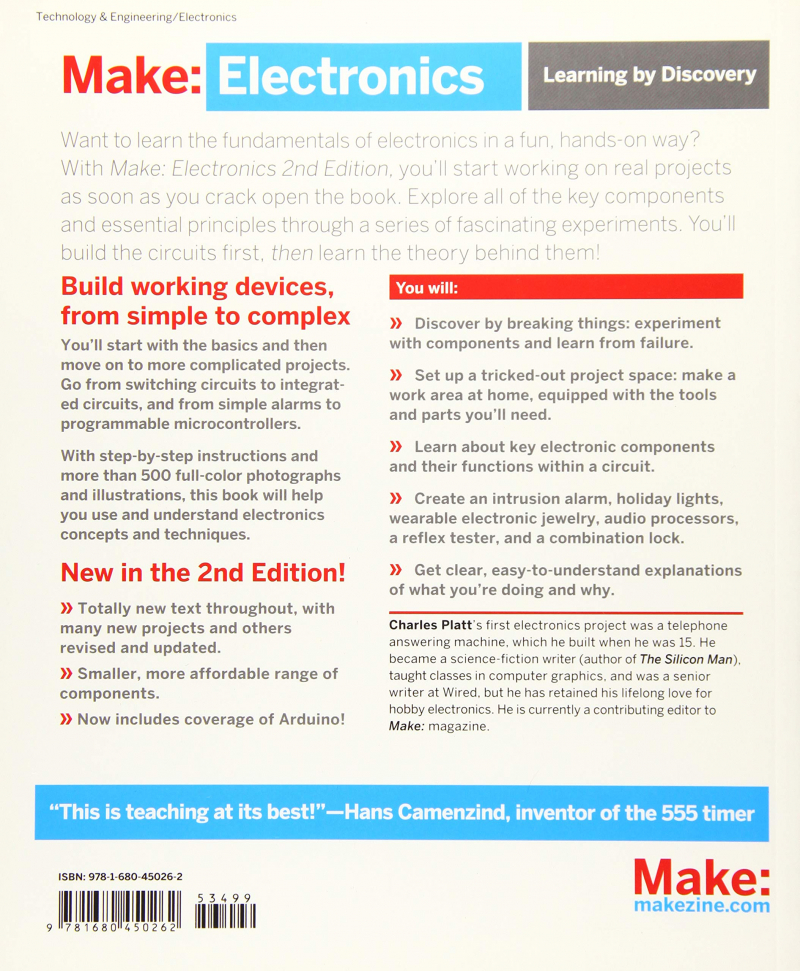Make: Electronics

Charles Platt is a Make magazine Contributing Editor and regular columnist who writes about electronics. He is the author of Make: Electronics, a highly successful beginning hands-on book, and is currently working on a sequel to that book, as well as volumes 2 and 3 of the Encyclopedia of Electronic Components.
Make: Electronics' initial edition set a new standard for introductory texts. This second edition improves upon the learning experience. Hundreds of images and illustrations in full color on every page present topics with unrivaled clarity.
Platt takes a hands-on approach throughout the book. You learn by creating simple circuits of your own. To show voltage, amperage, and electrical resistance, you begin by blowing a fuse or burning out an LED. "Burn things out, mess things up, that's how you learn!" states the cover. Basic switching circuits are the next step in the hands-on approach. A relay's sealed container can be opened to examine what's going on within. Components are depicted in 3D representations as they are plugged into a solderless breadboard. A straightforward circuit demonstrates how a capacitor stores and releases electricity.
While Make: Electronics reduces the amount of theory required, it does show you how to calculate the time constant of a capacitor using Ohm's Law and easy algebra. A purchase guide displays basic items such as pliers and a low-cost voltmeter. Color images of components such as transistors and capacitors help you identify them fast.
How transistors switch or amplify current is demonstrated by a simple "finger test." The book then shows you how to build functioning circuits to generate light and sound, which leads to a design for a simple intrusion alarm.
Platt comprises three chapters that demonstrate how to solder wires and construct a permanent circuit. However, soldering skills are not required for the remaining projects in the book.
You learn everything there is to know about integrated circuit chips, including how they function, what they perform, how they are identified, and where you can get them. Make your own oscillator and one-shot circuits, and learn how to connect timer chips. A simple circuit can put your reflexes to the test. Other circuits include a computer combination lock and a game in which participants race to be the first to press a button. To make electronic dice, there is a novel, simplified circuit.
Make: Electronics contains tips on organizing your workspace, storing parts, and purchasing extra tools if you desire to go deeper into the topic. The book's final section describes inductance and the components that utilise it, such as loudspeakers and a rudimentary AM radio. Finally, three chapters explain microcontrollers and include projects that can be done with an Arduino.
This book is written with the assumption that you have no prior knowledge. It teaches each idea in great detail and is polite, patient, and entertaining. Readers ranging in age from 8 to 84 have sent positive responses. Over 200,000 copies of the book have been sold.
Author: Charles Platt
Link to buy: https://www.amazon.com/dp/1680450263
Ratings: 4.7 out of 5 stars (from 1292 reviews)
Best Sellers Rank: #89,916 in Books
#9 in Circuit Design
#14 in C Programming Language
#22 in C++ Programming Language











